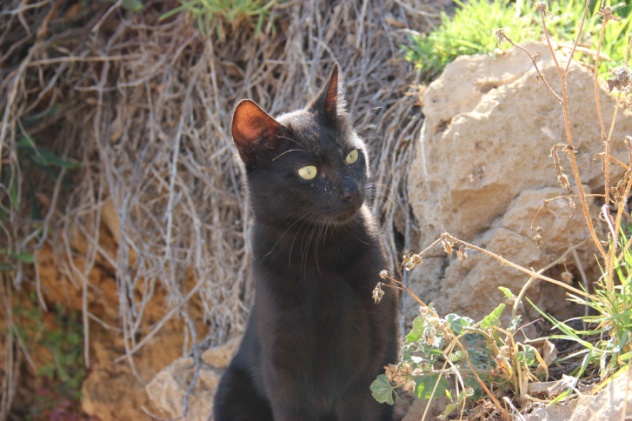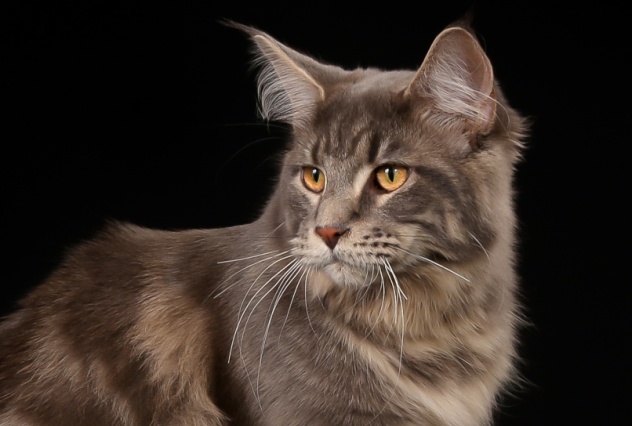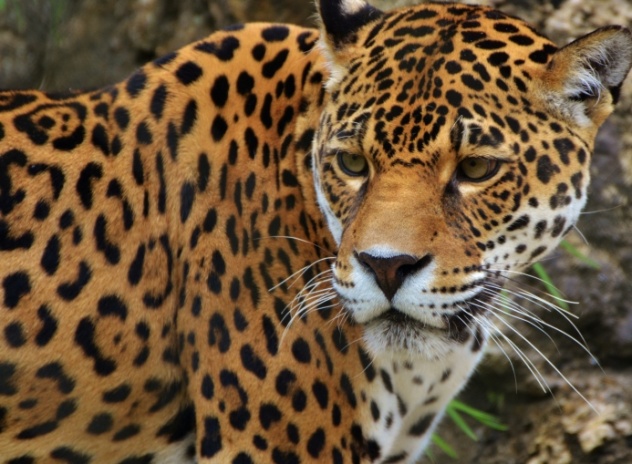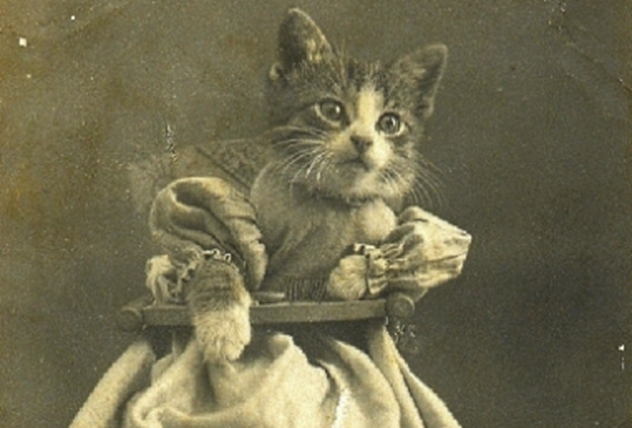 Weird Stuff
Weird Stuff  Weird Stuff
Weird Stuff  Our World
Our World 10 Ways Your Christmas Tree Is More Lit Than You Think
 Movies and TV
Movies and TV The 10 Coolest Stars to Set Sail on The Love Boat
 History
History 10 Things You Didn’t Know About the American National Anthem
 Technology
Technology Top 10 Everyday Tech Buzzwords That Hide a Darker Past
 Humans
Humans 10 Everyday Human Behaviors That Are Actually Survival Instincts
 Animals
Animals 10 Animals That Humiliated and Harmed Historical Leaders
 History
History 10 Most Influential Protests in Modern History
 Creepy
Creepy 10 More Representations of Death from Myth, Legend, and Folktale
 Technology
Technology 10 Scientific Breakthroughs of 2025 That’ll Change Everything
 Weird Stuff
Weird Stuff Ten Bizarre Facts About The Doge Meme
 Our World
Our World 10 Ways Your Christmas Tree Is More Lit Than You Think
 Movies and TV
Movies and TV The 10 Coolest Stars to Set Sail on The Love Boat
Who's Behind Listverse?

Jamie Frater
Head Editor
Jamie founded Listverse due to an insatiable desire to share fascinating, obscure, and bizarre facts. He has been a guest speaker on numerous national radio and television stations and is a five time published author.
More About Us History
History 10 Things You Didn’t Know About the American National Anthem
 Technology
Technology Top 10 Everyday Tech Buzzwords That Hide a Darker Past
 Humans
Humans 10 Everyday Human Behaviors That Are Actually Survival Instincts
 Animals
Animals 10 Animals That Humiliated and Harmed Historical Leaders
 History
History 10 Most Influential Protests in Modern History
 Creepy
Creepy 10 More Representations of Death from Myth, Legend, and Folktale
 Technology
Technology 10 Scientific Breakthroughs of 2025 That’ll Change Everything
10 Weird Ways Cats Have Been Venerated Through History
Thanks to the Internet, cat iconography is ubiquitous and inescapable. However, this is just the continuation of an epic, millennia-strong love affair between two (not so) different species.
10 The First ‘Pet’ Cat

The unearthing of a 9,500-year-old cat at a Neolithic burial site in Cyprus has quite possibly pushed back the anthro-felinic timeline by thousands of years. You see, cats are not native to the region and must have been brought there by ancient settlers.
It was first thought that humans transmogrified wild cats to house cats around 4,000 years ago in Egypt. However, more recent finds credit cat domestication to the Chinese 1,000 years earlier. Since then, older specimens have been found in Northern Africa, but the nearly 10,000-year-old remains unearthed at the Shillourokambos settlement in Cyprus are a downright antediluvian antique.
This Neolithic Nyan Cat was planted about a 0.3 meters (1 ft) away from its potential human, a person of great importance, judging by the intricate burial trinkets found within. The duo’s grave was littered with a rare assortment of items, including ornamental shells and a small, ceremonial jade axe.
Why was the kitten entombed alongside a human? Archaeologists aren’t sure, but the eight-month-old mouser definitely wasn’t butchered, strengthening the notion that the cat commanded at least a moderate amount of political sway.
9 Native American Ritual Burial
Nobody knows when humans stopped seeing cats as simple rat-killing machines and adopted them as cuddly companions, but a recent archaeological find has provided a partial answer.
At a Native American burial mound in what is now western Illinois, archaeologists have unearthed a 2,000-year-old bobcat. We’ve already talked about an even older cat, so why is this one so special? For one, it’s a historical one-off and the only recorded burial of a bobcat across the entire annals of archaeology. On top of that, it was placed in the middle of 22 human carcasses. It was also found with a fancy shell-and-bear-teeth collar around its neck.
Sadly, we might never find out if the Hopewell Native Americans really did try to domesticate bobcats. The feline’s current repository, the Illinois State Museum, is facing financial distress and shutting down. Hopefully, a miraculous cash infusion will save the institution, because if the museum closes, the bones will be made inaccessible by heaps of bureaucratic stupidity.
8 Tokyo’s Cat Temple
The Japanese really, really love their cats. In the 18th century, the maneki neko, little white cat effigies with upraised paws, were created to bring prosperity to shop owners and noodle weavers alike. Just like China’s opaque wall of smog, this endearing Japanese character has gradually swept through mainland Asia.
But when it comes to sheer numbers, no site houses more maneki neko than the legendary Gotokuji Temple in Tokyo’s Setagaya ward. The temple itself is small and unassuming, its facade giving no indication of the ceramic cat chaos within. Step inside, and you’ll see cloisters crowded with tiny white figures. Take a closer look, and you’ll find that they’re all cats!
Considered home by all maneki neko, Gotokuji Temple’s mythos is fascinating but perhaps not quite 100 percent historically established. Apocryphal or not, the story is as follows: Once upon a time, a wandering feudal lord sought shelter from a tempest underneath a tree not far from the temple. He noticed the priest’s cat beckoning him with its paw and followed it into the temple. Moments later, that same sheltering tree was vaporized by lightning. To honor the portentous pet, the feudal lord created the first maneki neko, beckoning paw and all.
7 Houtong
The Village Saved By Its Cats
Situated on Taiwan’s northern coast, the village of Houtong was literally saved by cats. It sounds like the plot of a Disney movie, but in the 1970s, this once-proud mining town was on the verge of disintegration, thanks to the emergence of cleaner energy sources, such as oil and gas.
The population had apocalyptically dwindled from 6,000 to a few hundred, and the little coal hub was in its death throes. Then in 2008, in a miracle that would be par for the course in Hollywood feel-good films, a random cat fan known Internet-wide as “Palin88” staged a photo op for the village’s large cat contingent.
With hundreds of cats lazing about the streets, Houtong immediately became an online sensation and suddenly needed a tourism board. Now, people are flocking from all corners of the globe to visit the slightly renamed Houtong Cat Village. They descend by the thousands on weekend jaunts to indulge their cat lust and inadvertently save a portion of Taiwanese mining history.
6 Cats And Marriage Beliefs

For all their ferocity, would you believe that the Vikings loved cats? They stocked felines to keep home and ship rat-free, and the most renowned of these breeds, the hulking Norwegian forest cat, still thrives in Scandinavia and on Reddit.
Because of their connection to Freyja, the goddess of getting it on, felines gained mystical status, and the Vikings looked upon all cat-related events as predictors of a fruitful (or fitful) marriage. For example, gifting newlyweds a black cat was a surefire way to ensure wedded bliss for all their days. In contrast to our modern stereotype of the crazy cat lady, all feline-frenzied females were guaranteed to eventually tie the knot.
Interestingly, many other peoples, including the French and English, adhered to the belief that felines doubled as matrimonial crystal balls. Seemingly random factors such as a mew or a sneeze could influence upcoming marriages. Half a Eurasian landmass away, the same beliefs propagated through the Buddhist world, where anything that meowed and had dark fur was considered a prognosticator of future riches. Polydactyl, or thumbed, cats were also considered lucky and fawned over.
5 Kuching Cat Museum
The Kuching Cat Museum, in the Malaysian state of Sarawak, is the first institution of its kind and the world’s largest repository of all things feline. Kuching roughly means “Cat City,” and as such, no better place could exist to showcase historical artifacts alongside tacky cat curios from all corners of the globe. In total, over 2,000 pieces from disparate cultures and times are displayed.
Operated under the auspices of Kuching’s North City Hall, the museum isn’t merely a kitschy tourist attraction. It’s also a scholarly place, indulging in history and global cat mythology. To distinguish itself from sleazy roadside attractions of the same theme, the museum is filled with rare, historical goodies, such as a 3,500-year-old Egyptian mummy and the world’s rarest taxidermied cat, the elusive Felis badia of Bornean fame.
If the museum wasn’t enough, Kuching is rife with cat statues and is also home to the Meow Meow Cafe.
4 Pan-American Jaguar Worship

Big cats are mostly associated with savannas and other African backdrops, but the stately jaguar is all-American. Endemic to the New World, these animals are inextricably entrenched in all sorts of Pan-American lore.
Jaguars are also associated with all sorts of desirable virtues like ferocity and valor. Even its name is awesome, meaning “he who kills in one fell swoop.” The Aztec, Maya, and Inca all revered the animal and enshrined it in their panoply of Gods. Temples were built to honor the jaguar’s magnificence, and the Maya even inducted the ferocious feline as their god of the underworld, complete with priests, called balam, to ordain over all death- and jaguar-related ventures.
The jaguar also features prominently in Native American legends, often as a guiding figure. In the story of the jaguar and the baby skunk, the former becomes godfather to the latter, teaching his stinky friend to “hunt.” In reality, the skunk was simply tasked with pointing out a target for the large cat to dispose of. Not realizing his limitations, the baby skunk then attempts to bring down a large elk on his own and is summarily killed.
3 Japan’s Cat Islands
Aoshima is one of those rare places where cats heavily outnumber humans. The Japanese island, part of the Ehime prefecture, houses a modest fishing village with six times as many felines as humans. Feedings routinely attract a ubiquity of cats, and the island has grown popular with tourists, much to the chagrin of the few permanent human denizens.
Aoshima isn’t alone, either. Tashirojima Island also holds an overwhelming cat contingent, several hundred strong with only around 100 human caretakers to revel in the fluffiness. Residents revere the cats, who were enshrined on the island almost 300 years ago as mousers. Tashirojima was home to a bustling, island-wide silkworm growing operation, and the kitties were brought in to protect valuable worms from rodent predation. Later on, fishermen became so enamored with the animals that they erected a cat stupa, or shrine, at the island’s center.
If two cat islands aren’t enough for you ailurophiles out there, rest assured that Japan has at least nine other cat islands that you can visit.
2 The Site Of Caesar’s Stabbing Has Been Repurposed Into A Cat Sanctuary
Former Roman dictator and salad namesake Gaius Julius Caesar was betrayed and killed by his colleagues at the Theater of Pompey in 44 BC. Now known as Largo di Torre Argentina, this historic site has quite unexpectedly been repurposed into a cat sanctuary.
Located about 6 meters (20 ft) under age-ravaged Roman streets, the large temple complex was unearthed when Mussolini’s crews were refurbishing the area in 1929. Over the next 80 years, the site of one of history’s most notorious murders bore witness to yet another invasion—feral cats. The multi-tiered structure was apparently irresistible to the city’s many stray cats, and they decided to aggregate within the perfectly sculpted cubbyholes and on top of immaculately shaped colonnades.
Rome’s total feline population is around 300,000, and the city’s laws protect cat gathering spots as urban sanctuaries. No one may disrupt any place where five or more cats have made their roost.
1 Nineteenth-Century Cat Meme Photography

Cat memes are no recent invention. As long as photography has existed, people have been gussying up their felines in human garb and posing them for elaborately staged portraits.
It all started with 19th-century British photographer and cat meme pioneer Harry Pointer, who cut his teeth taking cat pictures au naturel. That was pretty cool, but he decided that he could boost his appeal by enticing his Brighton Cats, as they came to be known, into reenacting human behaviors. We can’t vouch for his methods, as animal cruelty laws had yet to be invented, and clubbing seals was still legal, but Pointer experimented with several other animals as well. He found that pigs, dogs, and rabbits were stubbornly uncooperative, but young felines were perfectly malleable.
Almost 40 years later, in 1906, Harry Whittier Frees would achieve the next revolution in feline photography by slapping a party cap on the family cat and unknowingly birthing a new and long-lasting art form.








